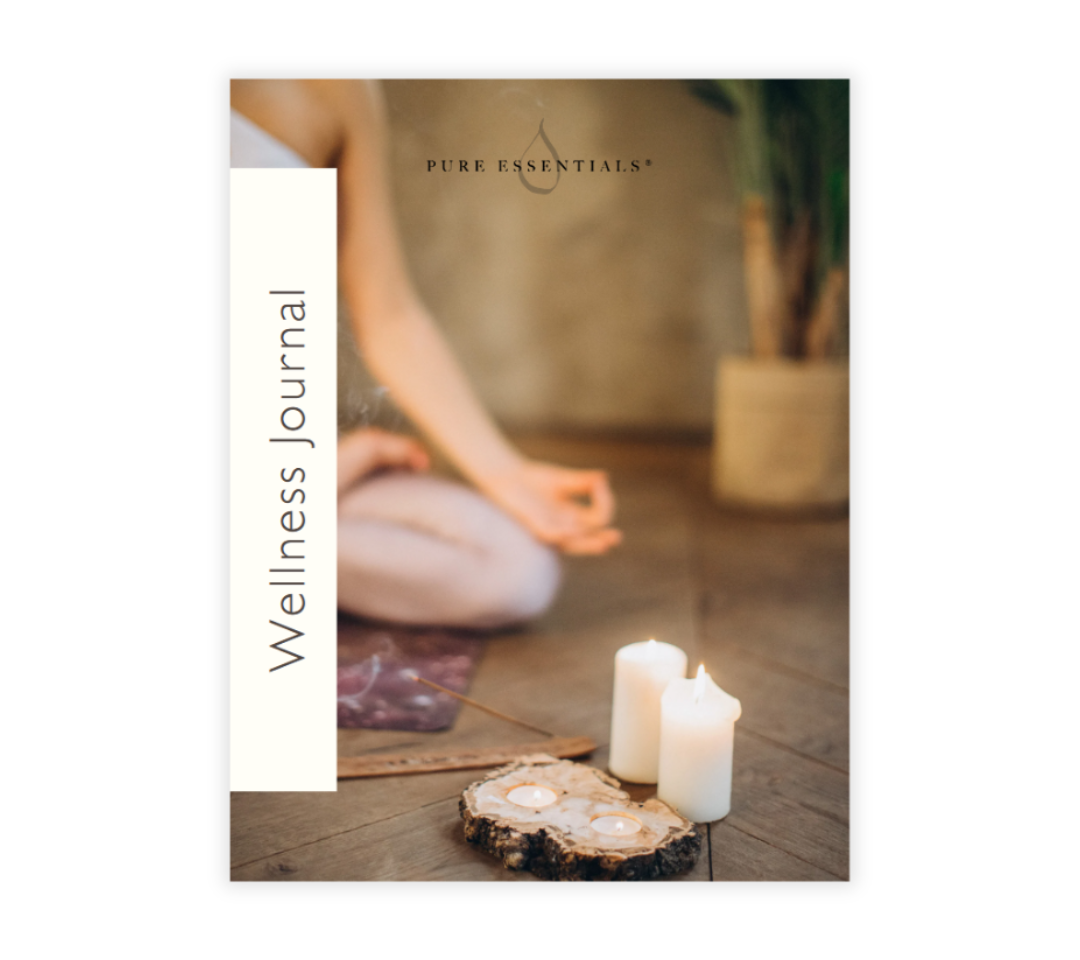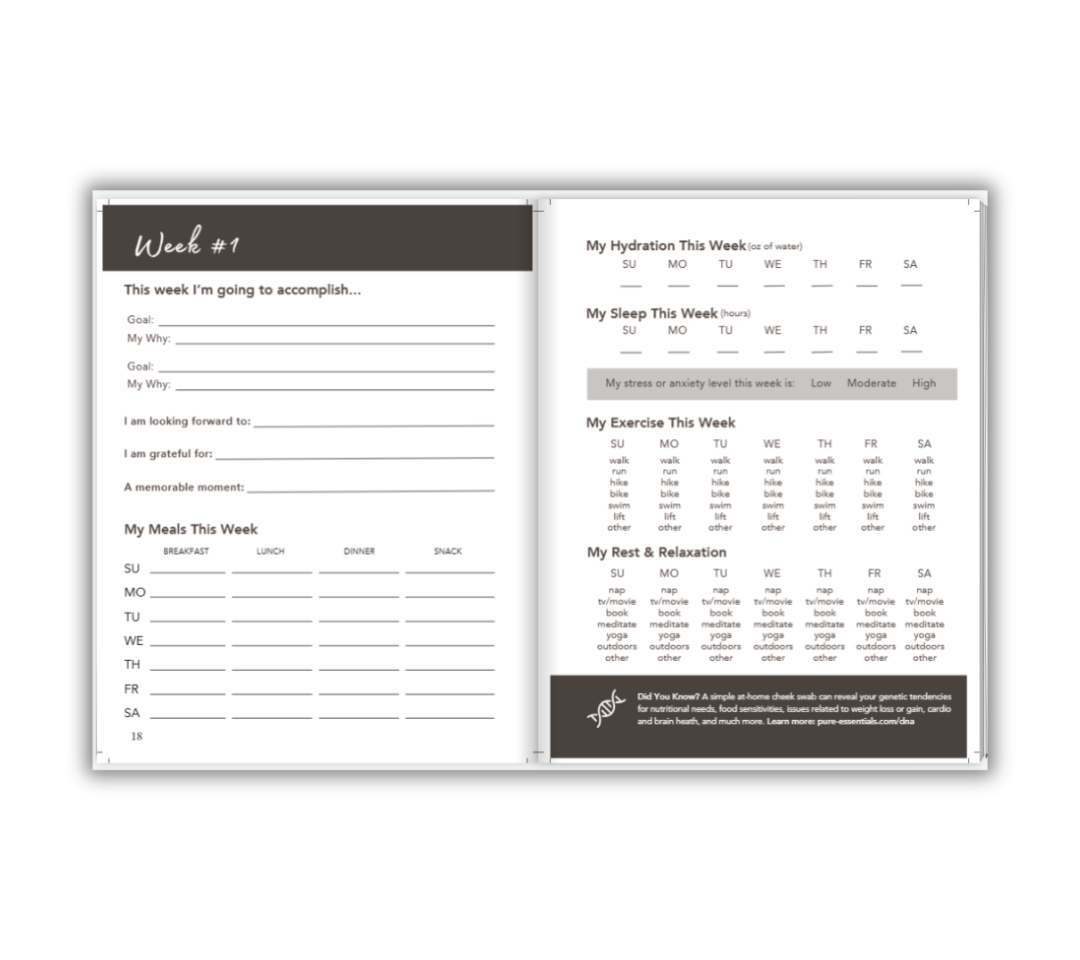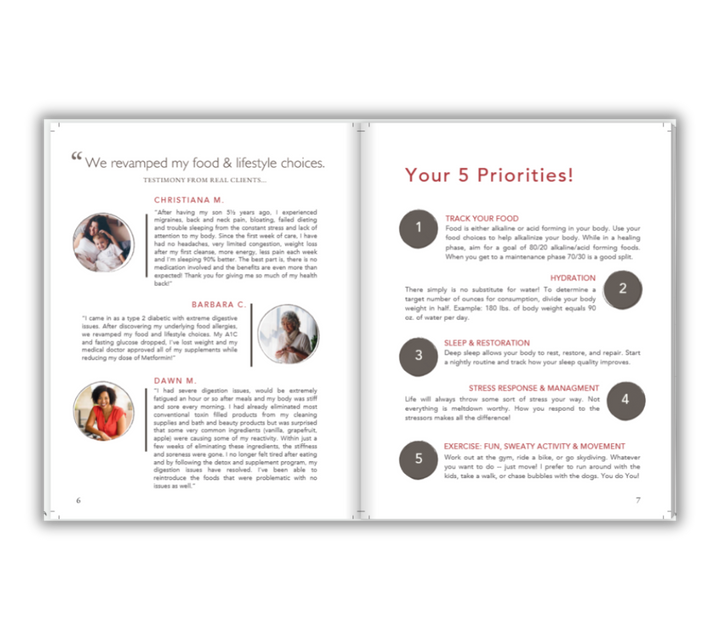summary:
Take control of your health with pH-balanced eating and effective food tracking. By adopting an 80/20 balance of alkaline to acidic foods, you can support energy, immunity, and bone health while reducing inflammation. This blog offers practical meal examples, tips for pH monitoring, and strategies to make gradual, sustainable changes. Track your journey with the Pure Essentials Wellness Journal and discover how a balanced diet can lead to long-term vitality and wellness.
Food Tracking for Better Health
In the journey towards health, maintaining an optimum pH with our food can be both interesting and life-changing. Food is not just about calories, vitamins, or minerals, they dynamically act upon the body to increase its acidity or alkalinity. Food can be medicine or poison - your choice.
Alkalizing the body is a concept of helping the body maintain a balance between alkaline to acid-forming foods-has become one of the most compelling ways toward increased energy, clarity, and well-being. 80/20 is recommended for repair and 70/30 for maintenance. In the journey towards health, maintaining an optimum pH with our food can be both interesting and life-changing. Food is not just about calories, vitamins, or minerals, they dynamically act upon the body to increase its acidity or alkalinity. Food can be medicine or poison - your choice.
Alkalizing the body is a concept of helping the body maintain a balance between alkaline to acid-forming foods-has become one of the most compelling ways toward increased energy, clarity, and well-being. 80/20 is recommended for repair and 70/30 for maintenance.
Wellness Journal
$29
- 52 weeks of progress across five essential wellness priorities: Nutrition, Hydration, Sleep & Restoration, Stress Management & Exercise.
- Over 100 pages for weekly tracking of your personal goals and progress across all priorities, plus space for notes of gratitude, memorable moments.
Understanding Acid / Alkaline Balance
Our bodies need an acid / alkaline balance (pH) to help our different organ systems function properly. As you can imagine, the stomach needs a more acidic environment for food digestion than the blood needs for oxygenation. The foods we eat, beverages we drink, our activity levels, even the thoughts we think can affect our pH balance.
The pH levels in our bodies are all different based on the job they have to perform. A way to monitor your body’s pH at home is with the first urine of the morning. This is the truest read of your bodies’ output. Think of it as your body’s way of evaluating all of your food, drinks,and activity, through the night and then delivering a report card every morning.
Alkaline-forming foods, often fruits, vegetables, nuts, and seeds, neutralize acids in the body to put the internal environment into harmony. Acid-forming foods, usually animal proteins, grains, processed foods, and sugars, could reduce pH and stress bodily systems when taken in excess. The acidity or alkalinity of the food itself is not as important as its effect on our internal system…what does it do for us or to us? For that reason, health experts recommend the 80/20 rule in a healing or reset phase where 80 percent of the food consumed should be alkaline and 20 percent can be acidic.
The Benefits of an Alkaline-Rich Diet
Alkaline foods are said to decrease inflammation, increase energy, and promote the health of the immune system. They also help balance blood sugar levels, promote better digestion, and maintain bone density. When the body is acidic it searches for buffering minerals. Those buffering minerals are in our bones…so it’s easy to see how prolonged periods of an acidic environment can start to take a toll on our bone health.
Monitor Your Food Choices
Monitoring your choices is one of the best ways to stay on track toward your wellness goals. Many people use a food journal, digital journals, or specialized journals like the Pure Essentials Wellness Journal, that are crafted to make tracking easy and insightful.
The Pure Essentials Wellness Journal is designed to track habits for better understanding , offering organized spaces to monitor food choices while keeping your broader wellness journey in focus for the entire year. Detailed tracking may seem overwhelming at first, but will soon become intuitive, guiding you toward the best food choices to maintain balance. We can’t monitor what we don’t measure.
What Does This Mean For My Meals?
If we’re working to address an immediate situation, using the 80/20 balance, your plate will have 80% alkaline forming foods and 20% acid forming foods. Take a look at these examples:
Breakfast
Alkaline: Blend acai puree with a handful of spinach, coconut water, and a bit of avocado for creaminess. Pour the mixture into a bowl.
Toppings: Add sliced banana, kiwi, blueberries, and shredded coconut for natural sweetness and fiber. Sprinkle a few pumpkin seeds for texture and a touch of spirulina or chia seeds for added nutrients.
Acid: Add a small spoonful of almond butter on top for a bit of protein and healthy fats, balancing the overall meal.
Lunch
Alkaline: Mixed greens salad with kale, arugula, cucumber, bell peppers, and sprouts, topped with avocado and a lemon-tahini dressing.
Acid: A few slices of grilled chicken and/or a boiled egg for protein.
Dinner
Alkaline: Roasted vegetable medley (broccoli, zucchini, onions, carrots, and sweet potatoes) seasoned with herbs (rosemary, thyme) and olive / avocado oil.
Acid: A serving of wild-caught salmon.
This approach maintains a majority of alkaline-forming ingredients, with minimal acid-forming proteins for nutritional balance.
How Do You Test Your pH?
pH testing strips for home use can be a very worthwhile investment. These are strips available online or through health stores. Testing your first urine of the morning is the most accurate pH reading. You want to allow your body at least 6 hours of rest and then test. Remember: everything we put in our bodies can influence the pH. The target goal is somewhere in the 6.5 - 7.5 range. Every body is different and every situation we go through is different, all factors that go into our pH levels. Testing regularly along with food tracking, provides real-time feedback regarding how your food choices are affecting the body.
Overcoming Common Challenges
It takes some learning to adapt to an alkaline-based food plan. For most people, it is hard to resist very acidic favorites such as coffee, pastry, or cheese. Over time and with a determined course of adjustment, that small change can add up to make a big difference.
Make gradual swaps: herbal teas in place of coffee, or almond-based snacks instead of pastries. And remember, the balance does not have to mean no indulgence whatsoever-an 80/20 approach can accommodate indulgence within a structured framework. The goal is optimal wellness - not perfection. Reducing acidic choices and replacing them with alkaline choices in a slow and steady pattern can help you reach that goal.
An alkaline-based food plan is not a fad, but rather a commitment toward tuning in and catering to the needs of the body., Hopefully this plan will ignite changes that help foster vitality and a sense of balance within. So, when you're ready to take this journey, start slow and bring more alkalizing foods into your meals, track your choices with our Wellness Journal, and note the benefits.










